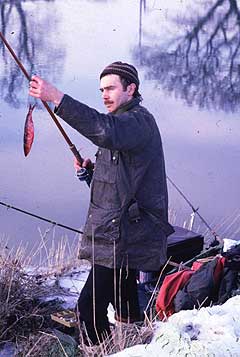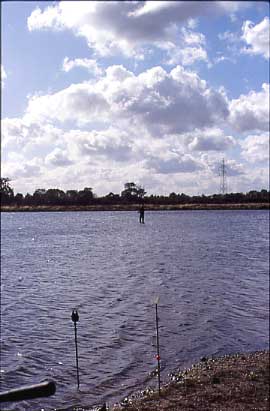The Adaptable Predator
The pike is a very adaptable predator and, as stated in Part 1 of ‘A Passion For Pike’ is naturally self regulating. This means that although they are found in a large variety of waters ranging from huge reservoirs to small ponds and tiny streams, this does not mean they necessarily thrive, hence in many waters pike rarely grow above high double figures. Although it is possible that a small water can throw up the occasional outsize fish the tales of the monster lurking in the village pond are usually greatly exaggerated. For anglers who usually spend their days snatching small roach and rudd a 15lb pike is indeed an impressive and awesome sight and it is due to this that these fables usually rear their head.
Summer Piking – Not For Me
|
|
| |
During the summer the warm water increases the pike’s metabolic rate making it an extremely active predator, aggressively chasing its prey and making this an ideal time to use livebaits or lures. However, speaking personally I don’t generally fish for pike until around October, the principal reason being that the pike fight with such ferocity in the warmer water of summer I do worry about their recovery.
I have had summer pike gas up on me after a prolonged fight and although given enough time and through careful handling they have all eventually swam away I must say I haven’t found it a very pleasant experience. I’m not about to try to dictate to other anglers when they should or shouldn’t target this species, suffice to say that in my personal opinion they are better left alone until autumn when their metabolism has begun to slow down. Don’t get me wrong, I’m not saying that in October or November a pike will not pull your string – far from it, in autumn I believe they are at their peak and tremendous sport and a spectacular headshaking fight are generally the norm once a good fish is hooked. But certainly once long periods of cold weather have set in, say from December through to February, don’t expect too much tail-walking and long exhilarating runs. On a more positive side at this time of year the big girls are hitting their peak, weight-wise.
RIVER PIKING
Most rivers hold pike to a very large size. Pike of 30lb-plus are taken each year from a variety of rivers around the country. It is surprising how they can survive in some exceptionally fast water. Although they are principally an ambush predator, their dorsal and anal fin being set well back to give a sudden burst of speed they can still hunt effectively in fast currents. In fact (when I did fish for pike during summer) a favourite method of mine was to fish in really fast water on the middle Severn using nothing other than a dead dace or chub attached to a pair of trebles and wire trace. The bait would be cast across the river and ‘skipped’ across the heavy beds of streamer weed. The takes had to be seen to be believed – the pike generally going airborne as it crashed through the weed to hit its prey. Exciting stuff indeed!
|
|
| a 20 but shows how river fish are generally slimmer than stillwater fish |
Where To Find Them
Although fish do frequent the fast water, I would tend to target slower, more sedate areas of the river. Large outside bends usually have areas of slow, almost still water and these have been a favourite spot of mine to try, as have the areas of slack water immediately behind obstructions such as fallen trees, trailing branches, or bank prominences. A steady, constant pace of water is also an excellent area to try, with a trotted deadbait or livebait covering a large area of water often scoring on this particular type of swim.
Weirpools are obvious hotspots, the large areas of slack water under the sill of the weir and the margins on each bank are tremendous places to try. And I would go as far as to say that on any river holding pike there will be at least one resident fish (usually more) in the pool. The run-off is also a good spot to try; shoals of prey fish usually gather in the smoother, more consistent flow just below the weir so this makes a natural holding area for the pike.
Any marinas or boatyards should be targeted, the boat’s hulls giving cover for both predator and prey, with the marinas giving excellent protection during periods of flood. The mouth of any tributaries or ditches that flow into the main river should also be investigated, especially at times of high or flooded water, the small fish will seek sanctuary in the quieter water until the floods subside and once again the pike will take advantage of this and can be found in quite large groups gathered around such spots.
|
|
| a ledge before dropping a bait out. The importance of plumbing is obvious |
Pike caught from rivers are usually noticeably longer and slimmer than a stillwater fish of the same weight. This is due to the increased energy the pike expends by just holding position in the current. And, although this means pike caught from a river usually do not pack on weight as a stillwater fish would, they make up for this by their much improved fighting ability. Its an old clich













